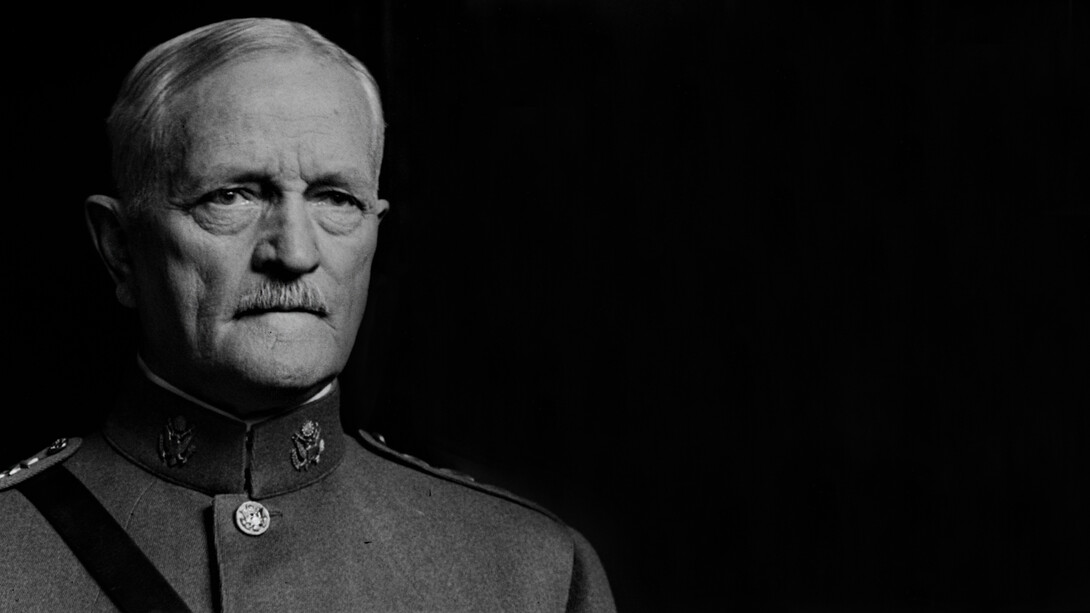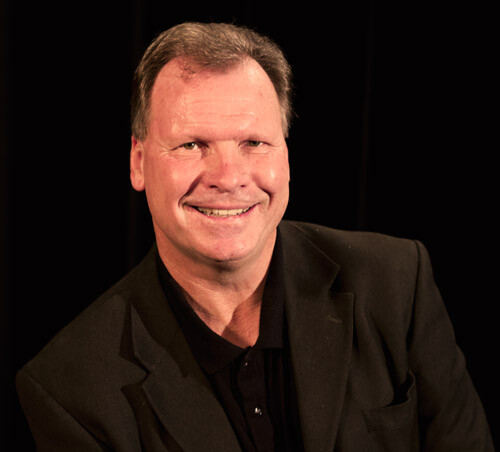
John J. Pershing, whose military career included a stint with the University of Nebraska Military Department (1891-1895), was once the nation’s best-known military commander. After he led U.S. forces during World War I, he was honored as the highest-ranking general in the history of the U.S. Army until his death in 1948.

University of Nebraska-Lincoln journalism professor Barney McCoy, who recently created a documentary, “Black Jack Pershing: Love and War,” offers 11 facts about the famed general’s life.
Pershing’s hometown of Laclede, Missouri, was invaded by Confederate bushwhackers just before his 4th birthday. The guerillas were hunting for his father, who flew the Union flag above his general store.
Before entering the U.S. Military Academy at West Point in 1882, Pershing taught African-American students at Prairie Mound School in Missouri.
In 1885, Pershing was promoted to first lieutenant and became one of the first white officers to command African-American soldiers in the 10th Cavalry. His nickname originated from his command of the segregated regiment, but later came to signify his stern demeanor.
In 1898, Pershing led 10th Cavalry soldiers up San Juan Hill during the Spanish-American War. Pershing’s gallantry in the Battle of San Juan Hill caught the attention of Teddy Roosevelt, who also fought his way up San Juan Hill with his “Rough Riders” regiment. After Roosevelt became president, he promoted Pershing to brigadier general over 800 more senior officers.
For much of the early 1900’s, Pershing served in the Philippines. There he commanded U.S troops in several Moro Rebellion battles involving warring Moro (Muslim) tribes. Before Pershing returned to the United States in 1913, he was military governor of the southern Philippines’ Moro Province.
In 1915, Pershing’s wife, Frances, and three daughters perished in a fire at the Presidio in San Francisco. At the time, Pershing was patrolling the Mexican border against a rumored invasion by Mexican Revolutionary General Francisco “Pancho” Villa. Pershing’s son, Warren, was the fire’s only survivor. The boy subsequently was cared for by Pershing’s sisters who lived in Lincoln, thus continuing the general’s connection to Nebraska.
After World War I, Pershing was promoted to General of the Armies and became the only active-duty six-star general in U.S. history. George Washington also was a six-star general, but wasn’t given the promotion until the U.S. bicentennial in 1976.
In 1932, Pershing won the Pulitzer Prize for history for his two-volume book set, “My Experiences in the World War. In his acceptance speech, he recognized 1922 Pulitzer Prize winner Willa Cather – who was his mathematics student when he taught at Nebraska.
Pershing was a mentor to a generation of U.S. Army generals including George S. Patton, Dwight D. Eisenhower, George C. Marshall and Omar Bradley, who led the United States in World War II.
In 1946, at 85, Pershing secretly wed French-Romanian portrait artist Micheline Resco in his Walter Reed Hospital apartment. Resco was 35 years his junior. The couple met in Paris in 1917 when Pershing arrived to command troops and exchanged love letters over 30 years.
While at Nebraska, Pershing earned a law degree, taught mathematics and formed a crack drill team that later became the nationally known Pershing Rifles. He also taught fencing to future bestselling authors Willa Cather and Dorothy Canfield Fisher.
“Black Jack Pershing: Love and War” premieres at 9 p.m. Nov. 11 on NET Television.







